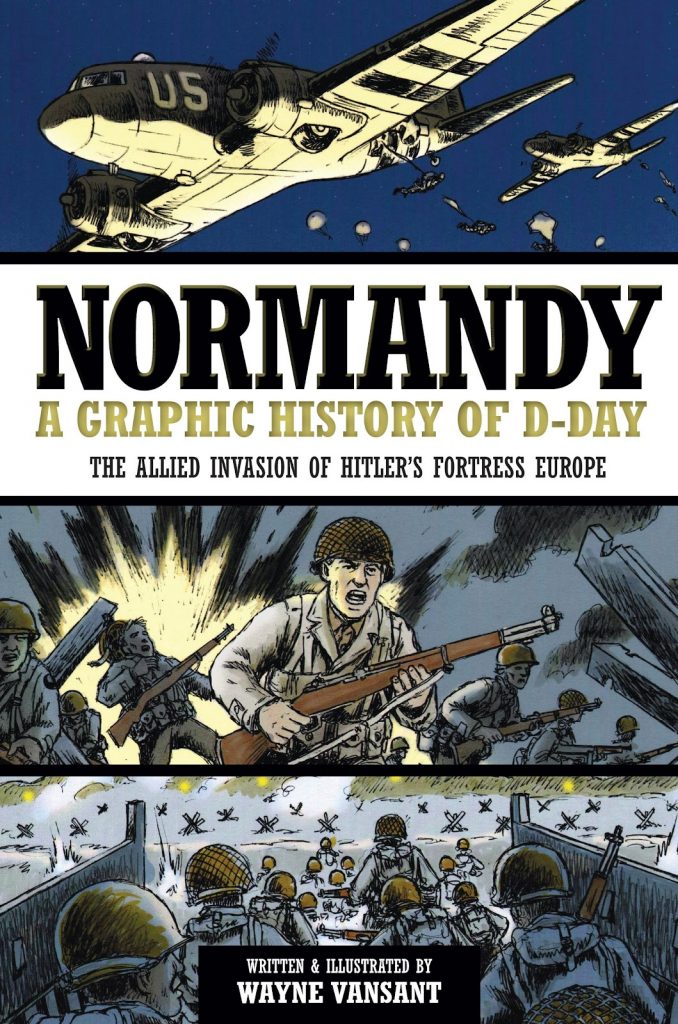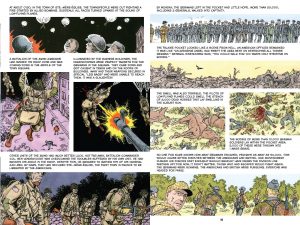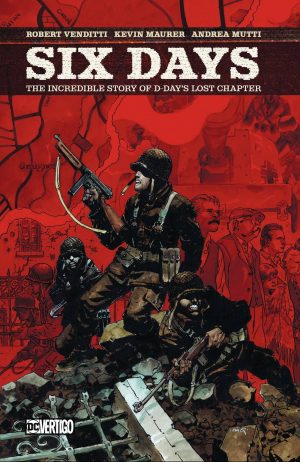Review by Frank Plowright
For many years Wayne Vansant has been the go-to creator for clear and well-researched books on wars and military campaigns, yet as far as the traditional comics venues go he flies well under the radar. However, working primarily for military and educational publishers means a lot of his projects end up in schools. It means that Vansant has considerable experience in supplying the maximum amount of information in restricted space, which is essential for complicated and multi-faceted subjects. The Normandy invasion of June 6th 1944 certainly meets those criteria.
Nazi Germany had occupied most of Europe for four years by 1944, but made the crucial mistake of turning on their Soviet allies and then underestimating just how resilient Russia could be. The Soviets, now allied with the UK and USA, wanted an invasion of France to spare their troops, but a 1942 task force was easily dealt with by the Germans, and it wasn’t until 1944 that the allies built up enough forces and equipment to consider another. This invasion was planned for the long French Normandy coastline.
Vansant deals with the complexity by using blocks of text to pass on the detail, accompanied by portraits or scene-setting illustrations. He’s very thorough, not just passing on the American movie version of events, but acknowledging other forces were involved and differences of opinion between them. There’s no dismissing the enormously high casualty rate on both sides, numbers shocking by today’s standards. An early sequence deals with allied forces needing to capture a German gun battery. Many of the forces parachuted into Normandy blew off course, as did equipment, and an expected force of 700 was reduced to 150. Half died, as did 176 of 200 German defenders. Such figures aren’t unusual for a campaign that eventually liberated Europe, and Vansant’s detailing of how planned events failed with a massive bodycount has the necessary solemn emphasis. Importantly, Vansant acknowledges the sacrifices made by soldiers of all nations, and also notes the massacres of entire villages as revenge for sabotage attacks by French resistance fighters.
The narrative ends with the allied forces freeing Paris on August 25th 1944. It had taken countless lives over eleven weeks to cover the 125 miles distance between the landing stages and the French capital. Vansant’s achievement in compressing so many stories into 96 pages is remarkable. As World War II fades ever further into history and the lessons of it are forgotten, circulating books like Normandy through schools cultivates an important awareness of what war is really like.





